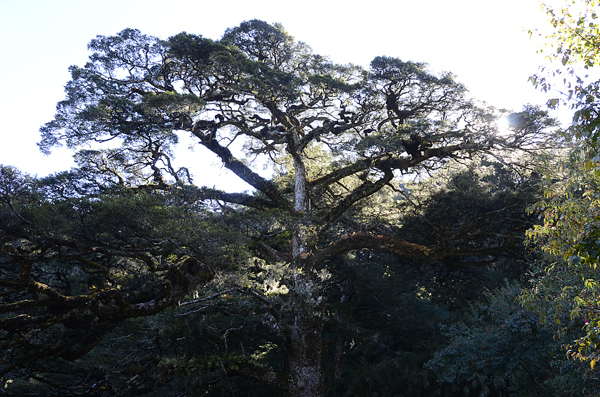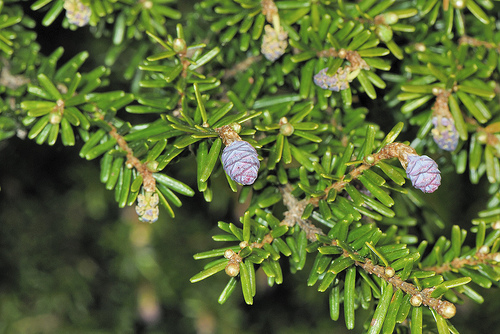Tsuga chinensis var. formosana, first described in 1954 by (Hayata) H. L. Li & H. Keng is commonly known as Š°æ¹¾é“æ‰ (tai wan tie shan) in the Chinese language. Synonyms include Tsuga formosana Hayata (1908) and T. chinensis var. daibuensis S. S. Ying.
Aljos Farjon, a conifer expert from the Royal Botanic Gardens at Kew, considers this variety identical with the type, but according to Raven and Wu, there are subtle differences in the seed scales. In T. c. var. chinensis, seed scales are are pentagonal-ovate, subsquare, or suborbicular, while in var. formosana they are compressed orbicular to nearly semiorbicular. Otherwise, they varieties are identical.
Distribution. This variety is native to China - exclusive to the island of Taiwan, growing in the mountains at elevations of (2,000 - 3,500 m) above sea level.

